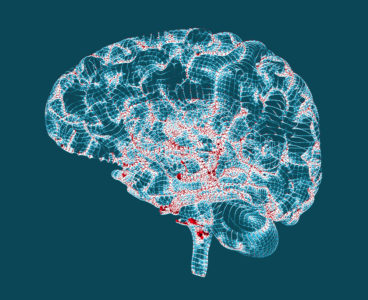Previously graphene-oxide membranes were shown to be completely impermeable to all solvents except for water. However, a study published in Nature Materials, now shows that the molecules that pass through these membranes can be tailored by simply making them ultrathin. The research team led by Professor Rahul Nair at the National Graphene Institute and School…
Graphene Performs Well Under Pressure
Scientists at The University of Manchester have fabricated highly miniaturized pressure sensors using graphene membranes which can detect minute changes in pressure with high sensitivity, over a wide range of operating pressures. Writing in Nanoscale, Dr. Aravind Vijayaraghavan and recently graduated PhD student Dr. Christian Berger have shown that it is possible to make an…
Devices Made From 2D Materials Separate Salts in Seawater
2D Material Derived Devices Separate Salts in Seawater
New Compound Discovered in Fight Against Inflammatory Disease
Scientists Create World’s First ‘Molecular Robot’ Capable of Building Molecules
Scientists at The University of Manchester have created the world’s first ‘molecular robot’ that is capable of performing basic tasks including building other molecules. The tiny robots, which are a millionth of a millimetre in size, can be programmed to move and build molecular cargo, using a tiny robotic arm. Each individual robot is capable…
Major Leap Towards Storing Data at the Molecular Level
Major Leap Toward Data Storage at the Molecular Level
Electrons Flowing Like Liquid in Graphene Start a New Wave of Physics
A new understanding of the physics of conductive materials has been uncovered by scientists observing the unusual movement of electrons in graphene. Graphene is many times more conductive than copper thanks, in part, to its two-dimensional structure. In most metals, conductivity is limited by crystal imperfections which cause electrons to frequently scatter like billiard balls…
Researchers Use Polystyrene to Make Next-Generation of Solar Panels Even Cheaper
Flexible Batteries Power the Future of Wearable Technology
Scientists Reveal Source Of Human Heartbeat In 3D
2D Materials Clean Up Their Act
However, being this thin comes at a price: the functional properties we depend on will change if the material becomes contaminated. Luckily, many 2D materials exhibit the ‘self-cleaning phenomenon’, meaning when different 2D materials are pressed together, stray molecules from the air and the lab are pushed out leaving large areas clear of impurities. Since graphene’s isolation…
2-D Materials Clean Up Their Act
Two-dimensional materials such as graphene may only be one or two atoms thick but they are poised to power flexible electronics, revolutionise composites and even clean our water. However, being this thin comes at a price: the functional properties we depend on will change if the material becomes contaminated. Luckily, many 2-D materials exhibit the ‘self-cleaning phenomenon’,…
Heat-loving Quantum Oscillations
The rapidly developing science and technology of graphene and atomically-thin materials has taken another step forward with new research from The University of Manchester. This research, published in Science, shows how a variety of different electronic properties – essentially new materials – can be realized simply by applying a magnetic field. Electrons inside materials move…
Nanoscale Machines Draw Power from Mini Heat Engines
Research from The University of Manchester has thrown new light on the use of miniaturized “heat engines” that could one day help power nanoscale machines like quantum computers. Heat engines are devices that turn thermal energy into a useful form known as “work” which can provide power — like any other engine. Dr. Ahsan Nazir,…
Graphene Makes the Nuclear Industry Greener
Graphene could help reduce the energy cost of producing heavy water and decontamination in nuclear power plants by over one hundred times compared with current technologies, University of Manchester research indicates. The new development could lead to the reduction of CO2 emissions associated with heavy water production by up to a million tons each year.…
Seawater Transformed into Drinking Water Using Graphene
Graphene-oxide membranes have attracted considerable attention as promising candidates for new filtration technologies. Now the much sought-after development of making membranes capable of sieving common salts has been achieved. New research demonstrates the real-world potential of providing clean drinking water for millions of people who struggle to access adequate clean water sources. The new findings…
New Role for Immune Cells in Preventing Diabetes and Hypertension
Potential Approach to How Radioactive Elements Could Be ‘Fished Out’ of Nuclear Waste
The Little Black Dress — Now Made with Graphene
Graphene Creates World’s Lightest Mechanical Watch
Scientists Tie Tightest Knot Ever Achieved
Scientists at The University of Manchester have produced the most tightly knotted physical structure ever known – a scientific achievement which has the potential to create a new generation of advanced materials. The University of Manchester researchers, led by Professor David Leigh in Manchester’s School of Chemistry, have developed a way of braiding multiple molecular…
Nano-Calligraphy on Graphene
Scientists at The University of Manchester and Karlsruhe Institute of Technology have demonstrated a method to chemically modify small regions of graphene with high precision, leading to extreme miniaturisation of chemical and biological sensors. Writing in ACS Applied Materials & Interfaces by researchers led by Aravind Vijayaraghavan, Ph.D., show that it is possible to combine graphene with chemical and biological…
Nano-Calligraphy on Graphene “Paper”
Scientists at The University of Manchester and Karlsruhe Institute of Technology have demonstrated a method to chemically modify small regions of graphene with high precision, leading to extreme miniaturization of chemical and biological sensors. Writing in ACS Applied Materials & Interfaces, researchers led by Dr. Aravind Vijayaraghavan have shown that it is possible to combine…












